Posts Tagged ‘prevention’
Posted on: April 1st, 2014 by Smart on Crime
I spent a couple years working as a Youth Outreach Worker with inREACH. I spent most of my time in the Preston Heights neighborhood and also in the Paulander community. I was part of the Community Mobilization phase of this pilot project and assisted the youth in running events/programs.(ie.. Art Studio, weekly youth drop-in, sports evenings, homework help group,..) Our approach with youth was very relational and strength-based. inREACH provided an environment that definitely steered us away from the traditional way of working with youth.
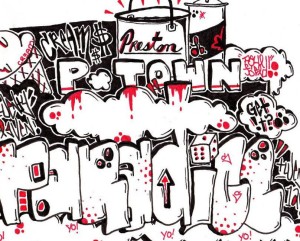 A big part of these two years was assisting the youth in opening a Youth Art Studio. This studio gave opportunities for at-risk youth to express themselves through the creative arts. It gave the youth a chance to engage in a new and healthy outlet to express their emotions, as well as cope with current and past adversities. I also assisted these youth in running their very first Art Show at a local gallery. Some sold their art, some made the paper; but more importantly I noticed a huge boost of confidence in each of the youth who took part in this.
A big part of these two years was assisting the youth in opening a Youth Art Studio. This studio gave opportunities for at-risk youth to express themselves through the creative arts. It gave the youth a chance to engage in a new and healthy outlet to express their emotions, as well as cope with current and past adversities. I also assisted these youth in running their very first Art Show at a local gallery. Some sold their art, some made the paper; but more importantly I noticed a huge boost of confidence in each of the youth who took part in this.
Over the years I always found the act of creating art a very therapeutic experience for the youth I worked with.
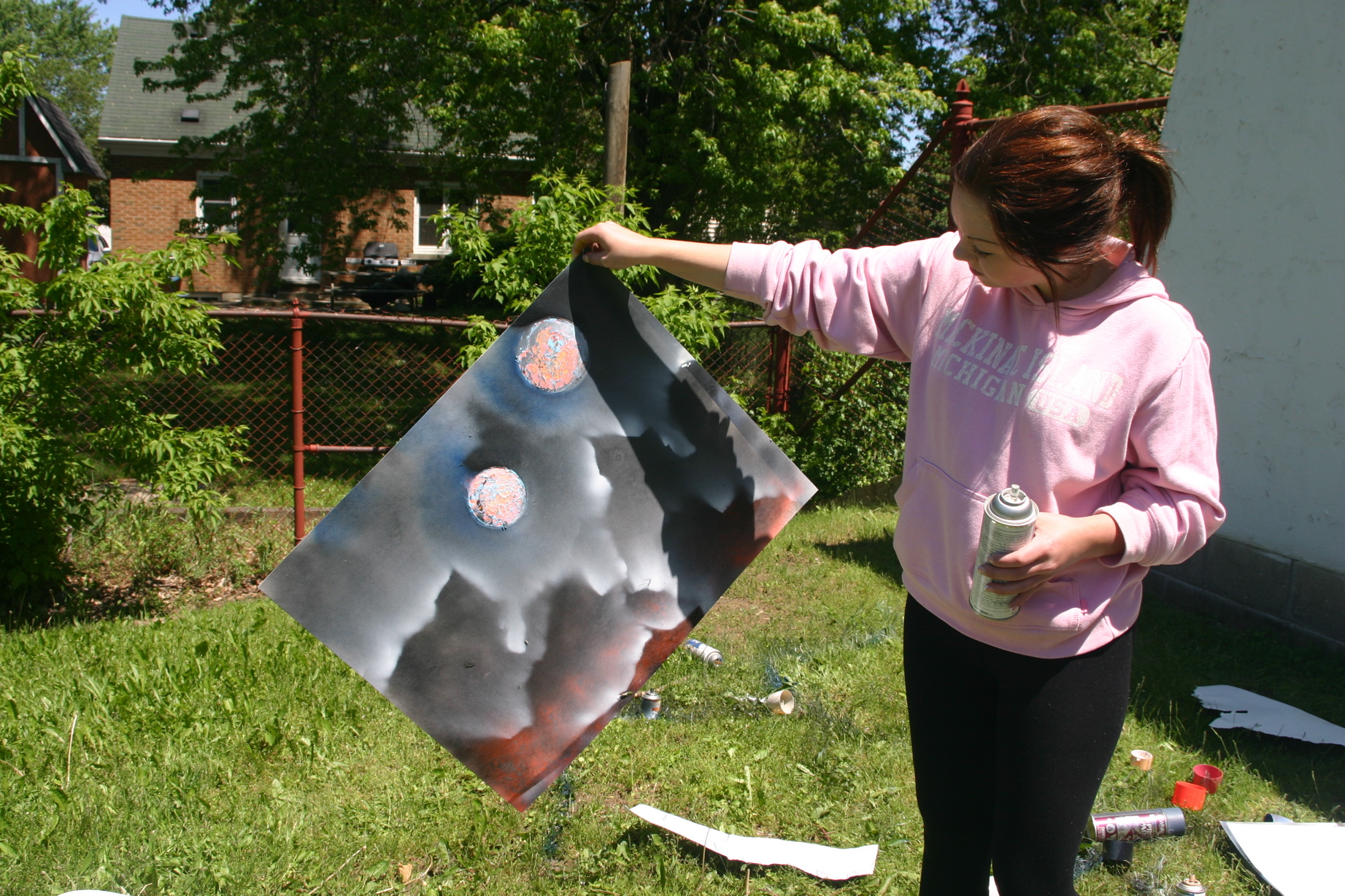
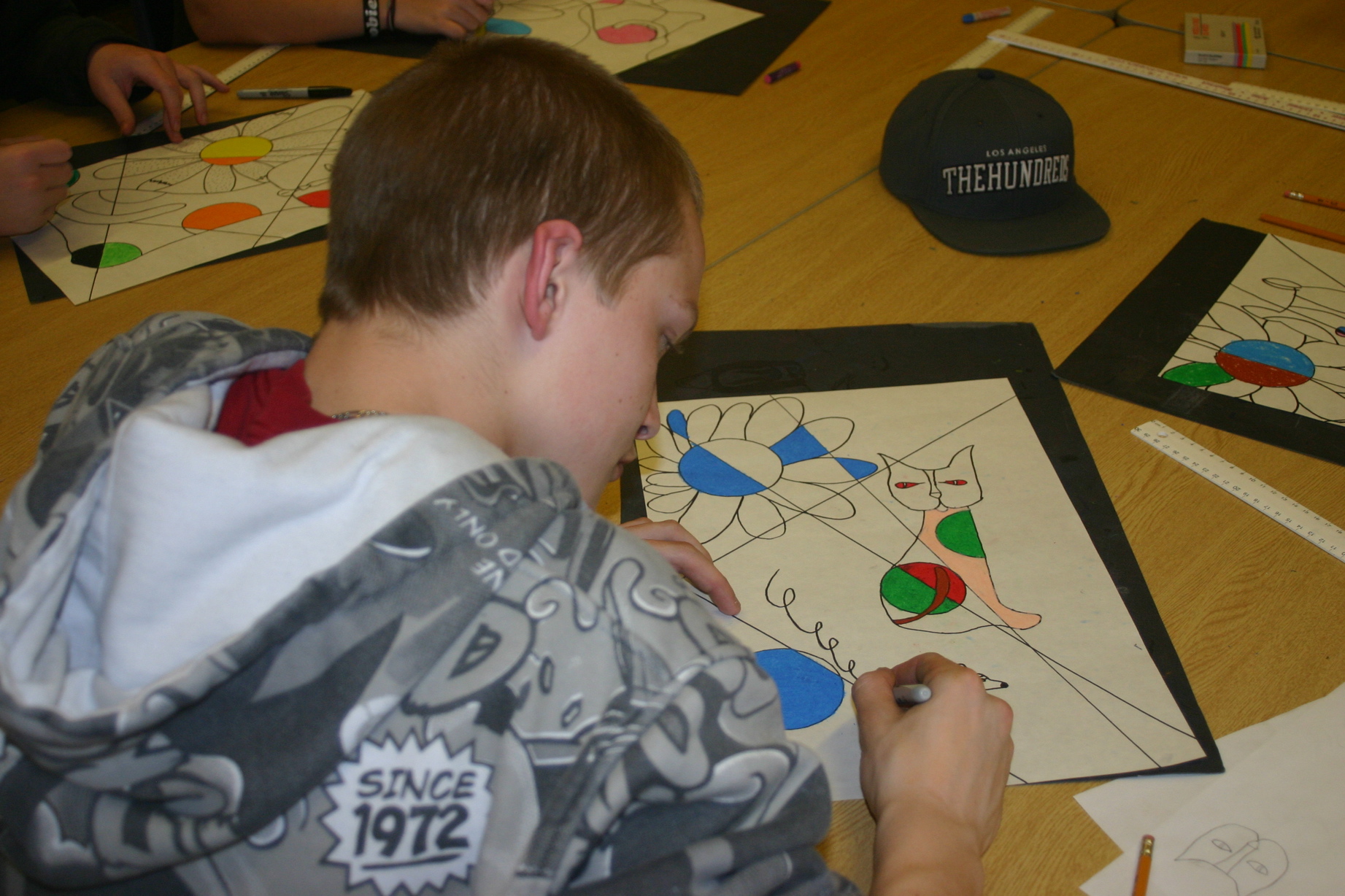
With inREACH closing due to lack of sustainable funding, I decided to start a for-profit business that would fund an Art’s program for at-risk youth. I started Art Innovators Waterloo Region. I hired a team of Art Instructors in the beginning of 2013, and we now provide after school/lunch time Art Programs in over 30 schools within 7 local School Boards. These programs are all parent paid. We also now run Art Camps, Corporate Team building Art Classes and Seniors Art programs. I use the profits from these programs to fund art programs for at-risk and disadvantaged youth.
I run programs in local alternative schools and youth shelters like Argus (males), Argus (females), Monica Ainslie Place, New Dawn, New Way, etc. I am even able to continue to connect with some of the youth I had worked with through the inREACH project. I am very excited to be running an art program with Community Justice Initiatives in a local Custody facility (GVI). I am also able to offer free scholarships to many families who cannot afford our Art Program in each of the schools we partner with. One of my free art programs starts next week in a Waterloo Region Catholic school in the Paulander Neighborhood.

I feel that my experience with inREACH had an important part to play in starting Art Innovators here in the Waterloo Region.
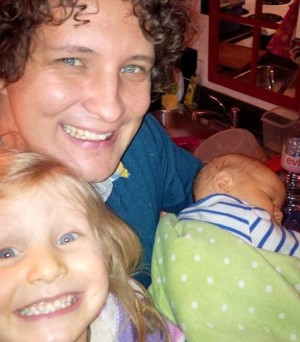 Author: Paul Field
Author: Paul Field
I am the middle child of 7 brothers and grew up in the country. I spent the last dozen years working in the Social Work Field in settings such as Schools, Group Homes, Rehabs and Youth Drop-in Centers. My passions have always been working with youth, travelling and creating Art. I am blessed with my beautiful wife Liana and two amazing children; Willow and Lachlan!
Posted on: March 31st, 2014 by Smart on Crime
My experience with the inREACH project began when the Community Mobilization team was formed. I was one of 4 Youth Outreach Workers, working primarily in the Courtland Shelley community as well as in the Paulander neighborhood, both in Kitchener. Our job as Youth Outreach Workers was to work within the neighbourhood to help make young people feel a greater sense of belonging and security within their community.
inREACH fostered a working environment that not only allowed us, but encouraged us to work outside of the box. I’d be lying to say the task was not daunting at first. In my previous experience working as a Youth Worker I had never been given such flexibility and confidence within a position to achieve the desired outcome; an outcome that was not based on the amount of programs ran or number of program participants but the ability to engage youth in their community. We were not given a method to do this; it was easy to see that each of the communities we worked in were uniquely their own. We were introduced to the Spergel Model to use as a foundation and approached our communities in a very strength based, relational approach.
What I appreciated most about working with inREACH, and what I have made a conscious effort to take with me in my work is the time we were given to establish relationships. I spent the first couple months getting to know and understand the community I was working in. I was given the flexibility to do this in many different ways. I spent time outside playing with the kids, going to adult classes or food distributions at the community centre, attending parent council meetings, sharing food with youth, and just hanging out in parks, the malls and parking lots. Any place I thought I might connect to the community I went. inREACH and my working agency, House of Friendship gave me the time to make my visual presence in the community known, and to establish trust and rapport with the youth and their families. Although there were days this time spent within the community did not seem valuable, it was undoubtedly critical to the success of working with the youth in these communities – taking the time to establish a solid relationship allowed for programs, education and training to be successful later in the project.
Through my experience at inREACH I also saw success in an alternative approach to programming. Many community agencies believe that after a certain age youth are not interested in being involved in their community or attending programming at a community centre. I myself have even been guilty of some of those thoughts, however after running strong programs I realize now that it is all in the approach. Creating successful, well attended programs began with the relationship that was formed between the youth and me in the first couple months of working in the community. Through this relationship I was able to discuss with the youth what types of programs they would like. Focusing on their strengths and interest, the youth were involved in the planning and implementation of the programming, right down to the days and times they thought would work best. This created a program that they had interest and ownership in. I also learned to allow the programs to change and be flexible. Programs that initially were successful became less attended and needed to change according to the youth and their needs. Our funding from inREACH allowed us to do many impactful things with the youth outside of their community. Although these things were very important I saw how programming within their community helped the youth to feel a sense of belonging and safety within their neighborhood.
I am pleased to say that the Courtland Shelley Community Centre continues to run youth programs established through inREACH. I have been fortunate enough to remain working at these programs and to sustain relationships with many of the youth I worked with through the project. House of Friendship allows me to continue using approaches that help to enhance my relationship with the youth and run programs that represent their changing needs and wants.
My experience with inREACH has been invaluable. Working with the project has strengthened my skills and competency as a youth worker. I am proud to have been a part of such a unique project that united so many community agencies in collaboration. The inREACH project may have ended, but I take with me inspiration from the youth as well as for the future of youth engagement in the Waterloo Region.
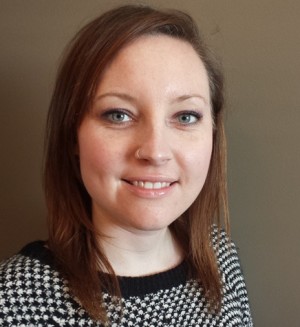 Author: Krista McCann
Author: Krista McCann
With an education in Child and Youth Counselling Krista McCann has spent several years working with marginalized children, youth and their families. Krista is dedicated to creating relationships and environments for youth to thrive.
Posted on: March 27th, 2014 by Waterloo Region Crime Prevention Council
I agree with the sayings – ‘there’s always more to learn’ and ‘it’s never too late to learn.’
I lived this out when I returned to university for a Masters degree the same year my daughter started university. Luckily she wasn’t too embarrassed to be at school with her mom. My timing turned out to be perfect for another reason as well. During my time in school I had the amazing opportunity to be involved with the research and evaluation of the innovative and highly successful gang prevention project, inREACH. I can guarantee you; I learned something new every day.
An excellent summary of the evaluation report for inREACH highlights a LOT of really important learning and accomplishments as a result of this collective community effort over the past few years. Sharing our story: Lessons learned from the inREACH experience describes how the project was implemented, the young people it served in the treatment and prevention programs, and the many positive impacts of the project on young people, neighbourhoods, organizations and the community as a whole.
 The most important lessons and understandings learned from inREACH will inspire community action toward a future where all young people feel part of a caring community and have the opportunities and the supports they need and deserve. But, any evaluation isn’t even worth the paper it’s printed on if it just sits on a shelf. We need to apply the evaluation findings so that we can affirm what might already work but also make changes where needed.
The most important lessons and understandings learned from inREACH will inspire community action toward a future where all young people feel part of a caring community and have the opportunities and the supports they need and deserve. But, any evaluation isn’t even worth the paper it’s printed on if it just sits on a shelf. We need to apply the evaluation findings so that we can affirm what might already work but also make changes where needed.
Here are 3 key things we learned from the inREACH experience that could help us more effectively engage young people who are marginalized and better address their needs.
It Works!
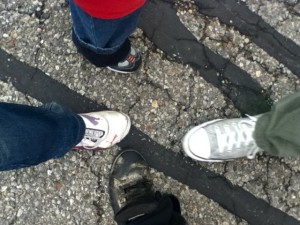 Some believe that teenagers – particularly those labelled as “trouble” – don’t want to be involved in community activities or mentoring relationships with adults. The evaluation busts that myth by demonstrating very clearly – that if organizations and communities take the right approach – then many adolescents and young adults, will participate in asset building activities like arts and sports. Many will also seek assistance for challenges they face with things like addictions, gang involvement or finding a job or a home, when they have developed a trusting relationship with an adult who meets them ‘where they’re at.’ The evaluation results also clearly demonstrated that when young people got involved in their communities and received help with life challenges, they experienced many positive benefits and changes. Over 95 % of youth agreed their involvement “helped them move in the direction in life they wanted to go.” For example, youth said:
Some believe that teenagers – particularly those labelled as “trouble” – don’t want to be involved in community activities or mentoring relationships with adults. The evaluation busts that myth by demonstrating very clearly – that if organizations and communities take the right approach – then many adolescents and young adults, will participate in asset building activities like arts and sports. Many will also seek assistance for challenges they face with things like addictions, gang involvement or finding a job or a home, when they have developed a trusting relationship with an adult who meets them ‘where they’re at.’ The evaluation results also clearly demonstrated that when young people got involved in their communities and received help with life challenges, they experienced many positive benefits and changes. Over 95 % of youth agreed their involvement “helped them move in the direction in life they wanted to go.” For example, youth said:
“they taught me to actually think before I acted…just keeping my cool overall and staying relaxed and not being so stressed out.”
“It helped me see the value of myself.”
Learning what it takes – with youth
 Sharing our Story describes key elements of the inREACH approach that was so successful. It took
Sharing our Story describes key elements of the inREACH approach that was so successful. It took
- the development of trusting relationships between staff and young people;
- listening to the youth and involving them in decision-making,
- recognizing youths’ strengths, skills, and interests, and
- making programs and services more accessible.
The evaluation report fleshes out some details of HOW to implement these approaches, which is the challenging part.
One illustration follows:
“I don’t think that they have ever had an adult say “what are your dreams?” and “how are you going to achieve those?” and then try to help them… That is my biggest question when I first meet a kid….it gets them thinking…. Then believing in them too and showing them you really care.” (Project staff)
Learning what it takes – the community’s role
inREACH was a collaborative venture of multiple organizations. The evaluation documents how these partnerships enabled organizations to work together more effectively, to work with youth in a different way, to access more services and resources and to “produce systemic change – changes in the way systems and organizations in the community approached the problem of gangs and at-risk youth.” (p 10)
Feedback to Community
It was important to report back to people who shared their thoughts and stories of involvement so I returned to many of the neighbourhood programs. Young people were keen to take the summary booklets and some were excited to see their own photographs featured there. Some youth who had been interviewed wanted the full 140 page version, partly to see if they were quoted there. There was a sense of pride for what they had created and accomplished and some commented on the huge difference the programs made in their lives.
 Continuing the Learning
Continuing the Learning
We know that if fewer adolescents and young adults experienced marginalization due to where they live or the challenges they face, then fewer young people would be attracted to gangs as a solution to their problems or to find a sense of belonging. So, it begs the question…. What should the community take forward from this youth gang prevention project?
There’s so much to talk about – outreach, social media, a youth engagement approach, new ways of collaborating across agencies, the role of neighbourhood community centres….
We look forward to working with our community to keep learning, but also move the learning to action. The upcoming event “Engaging marginalized youth” will help us do just that and you can join us on Friday April 11, 2014. Registration is required for the event and you can register here. [UPDATE: this event is now SOLD OUT. You can still register but you will be added to the wait list in case of cancelations.]
There’s always more to learn…
Photo Credits: all photos taken by inREACH youth during PhotoVoice projects. 2012
Posted on: March 25th, 2014 by Waterloo Region Crime Prevention Council
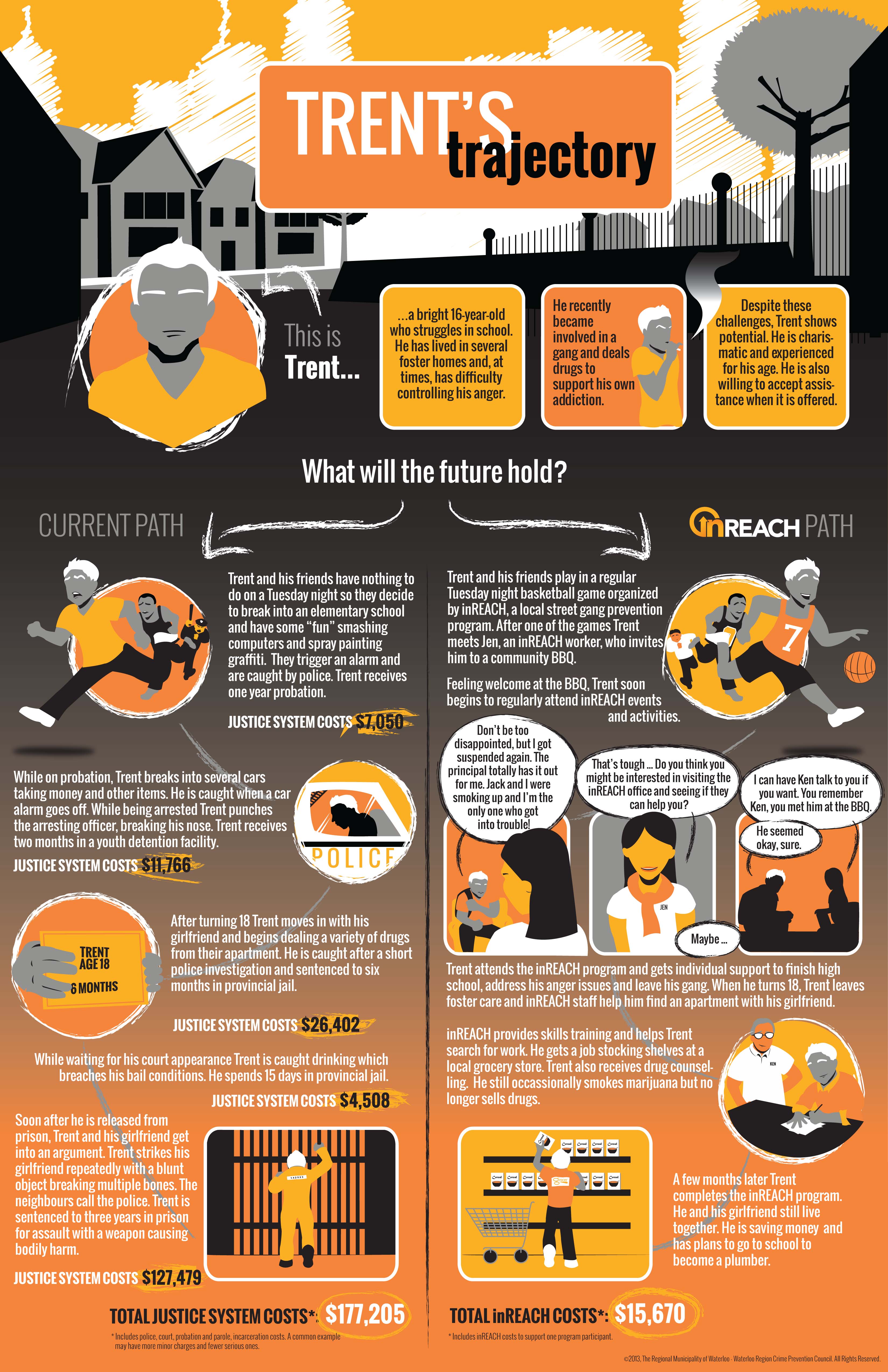
Trent’s Trajectory is fictional account of a sixteen year old teenager as he becomes an adult. The infographic, created by Wade Thompson, begins by discussing the risk and resiliency factors Trent faces. The story then branches into two paths. In the first path, Trent does not receive community supports and his risk factors drive the story culminating in a three year prison sentence. In the second path, Trent receives supports from the inREACH project. His resilience factors grow and Trent successfully transitions into adulthood.
Typical stories from the justice system and the inREACH program build Trent’s fictional story. Due to space constraints the ‘current path’ contains less minor crimes than would be expected from a repeat young offender and a few more serious ones. While this slightly changes the story, the overall justice system costs are realistic. It is important to note, while the story is specifically about the inREACH program similar outcomes can be reached for at risk youth in many other prevention programs.
Does this raise any questions for you? What do we do with this information now that inREACH has ended?
Posted on: January 8th, 2014 by Waterloo Region Crime Prevention Council
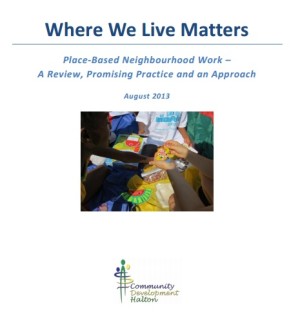 Title: Where We Live Matters | Place-based neighbourhood work – A review, promising practice and an approach
Title: Where We Live Matters | Place-based neighbourhood work – A review, promising practice and an approach
Authors: Jody Orr and staff of Community Development Halton
This new publication from Community Development Halton is a comprehensive read for any community development animator who works directly in neighbourhoods. Recognizing that the landscape of community work has changed dramatically in the past two decades, Orr and her associates urge us to adapt our approaches with the changing needs of our communities. And in case you’ve missed it, communities have changed!
This 70 page publication makes the case for ‘place-based neighbourhood work’ and details an engagement framework (pictured below) – An Approach to Building Neighbourhoods. Community work never follows a linear process and “Where We Live Matters” recognizes that neighbourhoods operate in a cyclical, repeated fashion between all stages of the engagement process depending on the issue or situation and the people involved in the work. It’s messy, chaotic and creative work and it’s hard to capture it accurately on paper!
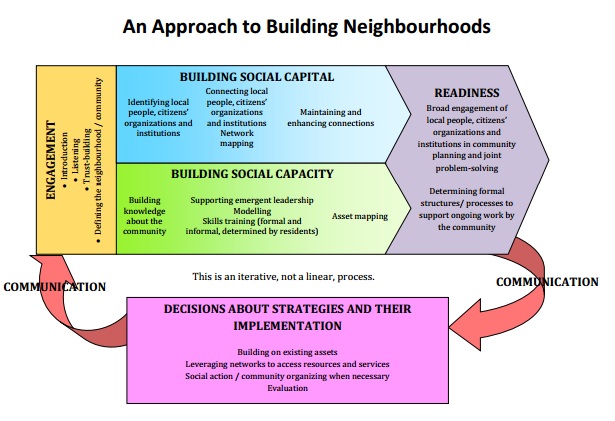
What I like about the model (pictured above) is that they break down the engagement process into more manageable building blocks. I can’t recall ever seeing ‘readiness’ so prominently placed in an engagement process – we all know it’s necessary – so glad to see it named in plain language. I think the distinction between social capital and social capacity is important. Too often, they are used interchangeably, but they truly are distinct concepts in community building.
The remainder of the article outlines:
- the key characteristics of communities in which effective community building processes have been carried out,
- the personal and professional qualities and skills of the people involved in effective neighbourhood work
- best and promising practices in neighbourhood work, focusing on place-based activity
- a brief history of place-based neighbourhood work
When you read the brief history of place-based work (Appendix 1), it’s easy to see how far community work has strayed from the direct neighbourhood level. “Where We Live Matters” urges a shift from the universal, service delivery approaches of the past decades, revisiting the classic community development approach of place-based work. There’s no denying it; there are unique and pressing needs in specific geographic areas of every city, town and municipality. Try as we might, universal approaches will never reach the most vulnerable neighbourhoods in our communities. The work needs to be done where it matters most – in neighbourhoods where people live, and with people who live there.
There’s a subtext to this article that is hard to ignore. It speaks to the role of traditional service delivery institutions, large systems and government social policy. Essentially… these entities are too slow and inflexible enough to respond to the needs of neighbourhoods. Often, these systems and institutions are so policy bound that they actually become an obstacle for the communities they are designed to be helping. Which reminds me of so many stories from the very wise Jim Diers who claims that government and large agencies are often the greatest stumbling block for neighbourhoods and communities.
Isn’t that upside down?
As a community practitioner and animator myself, it’s always refreshing to come across good applied research and this one is solidly rooted in practice and the experience of people working effectively with neighourhoods. The authors draw on the work of pioneers of community work such as:
- Joh McKnight
- John Kretzman
- Bill Lee
- Margaret Wheatley
- Paul Mattessich, Barbara Monsey & Corinna Roy
“Where we live matters” is not new earth-shaking work, but resonates with my own community work as an animator and echoes the growing plethora of place-based initiatives such as:
To better understand the document, check out this Tamarack podcast with Joey Edwardh, Jody Orr and Rishia Burke of Community Development Halton. They lead you through this resource document including an exploration of what inspired the investigation, the important role of an “animator” who enlivens and encourages development in community, funding for work that is hard to measure, and more!
After reading “Where we live matters” I wanted to go pull the McKnight, Kretzman, Lee and Wheatley books from the bookshelf and get reacquainted with the foundations of place-based work. There’s inspiration to be found for our daily work.
But most importantly, “Where we live matters” reminds us that what goes on in our neighbourhoods and the quality of life there has the greatest impact on our quality of daily living. We absolutely should be investing in neighbourhoods.
Posted on: January 6th, 2014 by Waterloo Region Crime Prevention Council
“I feel responsible…..” These are the exact words from a parent following a neighbourhood discussion about youth, drugs and addiction. But it’s maybe not the story you are imagining.
In my work as Community Engagement Coordinator with the Waterloo Region Crime Prevention Council, I spend some of my time with neighbourhoods, working through issues and challenges that have emerged over time or might be the result of a community crisis.
After facilitating a few meetings during the summer and early fall with a group of neighbourhood parents, they decided they wanted to learn about issues of substance use, addictions and youth. As parents they were very clear that they wouldn’t want their own children to use drugs, but they needed a better understanding of why some youth would take or use drugs, including youth in their own neighbourhood.
One evening, we watched the film Reduce Speed – a documentary about 5 teens who share their experience with using crystal meth. The film is told with their voices, their stories, their reality – which is helpful for adults to hear!
The film is heavy and is difficult for any parent to watch. “Sad”, “concerned”, “worried”, “depressed”, “at a loss”, “sick”, “sorry”, “serious”,…. were words these parents used to describe how they felt after seeing this 22 minute film.
A 2 hour discussion followed and we covered a lot of territory:
- how parents talk to youth about drugs and alcohol in a way that doesn’t become confrontational
- the challenges and pressures youth face about drugs and alcohol on a daily basis
- what might prompt youth to use drugs
- what youth see in their own neighbourhood with respect to drugs and alcohol use
- what might be some root issues or causes for youth who use drugs and alcohol
- what can the community do and who can help
The group plans to gather again to deepen their learning and understanding and move toward some action.
Before leaving the group, I asked each person to use one word to describe how they felt at the end of the evening. “Encouraged”, “hopeful”, “inspired”, “happy”, “energized”, “grateful”…. very different feelings than at the beginning of the discussion!
But something profound happened when one woman interrupted our leave-taking to add one more thought; raising her voice to be heard above the scrapping of chairs and rustling of coats, she said clearly, “I feel responsible”. She went on to explain that, before, the problem felt too big, too insurmountable, but she gained a different perspective through the film and our discussion and wants to be part of creating a change in her neighbourhood through her own actions, together with her neighbourhood.
This was a stunning moment, one that brought a lump to my throat. To see the roots of change emerge before my very eyes is a rare thing. This woman knows that everyone has a role to play in prevention, no matter how small or big, and that through individual and collaborative leadership, we can make change happen.
I can’t wait to see the leadership, action and responsibility that this group will take in 2014.
What kind of change will you be part of in your neighbourhood this year?
Posted on: September 10th, 2013 by Waterloo Region Crime Prevention Council
You might have noticed it in the title… the operative word being “early”. Every three years Senior Kindergarten teachers evaluate their students using the Early Development Instrument. This tool provides scores on a number of factors, two of which directly relate to crime prevention. Social competence measures a child’s interactions with others, ability to control their own behaviour, and cooperation with others. Emotional maturity measures a child’s ability for impulsivity control, ability to deal with feelings, and empathy for others. The percentage of children scoring low on these indices is noteworthy because antisocial behaviour among children is associated with an increased risk of persistent delinquency and criminal involvement later in life
The Statistics
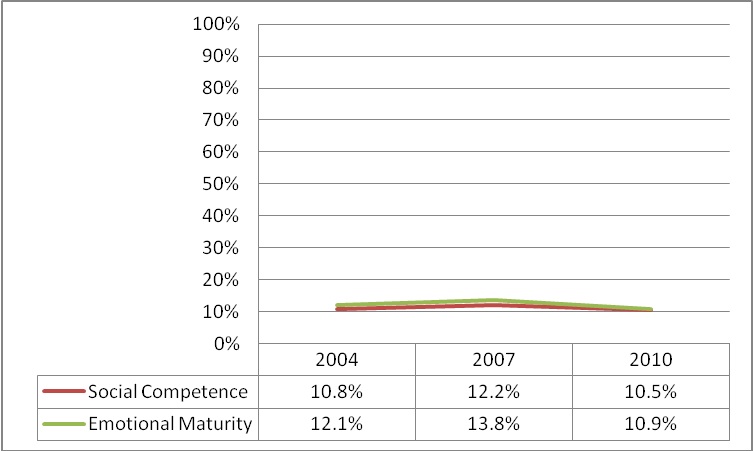 Data Source: Ontario Early Years Centre, A Community Fit for Children Report (Released Every Three Years)
Data Source: Ontario Early Years Centre, A Community Fit for Children Report (Released Every Three Years)
The Story Behind the Numbers
The percentage of children scoring low on the social competence and emotional maturity index declined from 2007 to 2010. However, despite the improvement Waterloo Region did not score as well as Ontario in 2011 which had 9.3% of children score low in social competence. Waterloo Region was also lower than Ontario, at 10.3%, on emotional maturity but this difference was not statistically significant. These numbers suggest that prevention opportunities exist through a focus on improving children’s emotional and social readiness for school.
Read the Community Responses:
Posted on: September 10th, 2013 by Smart on Crime
When reviewing the Snapshot in Time: Root Causes of Crime indicator comparing the 2007 and 2010 results of the ‘social competence’ domain of the Early Development Instrument, Waterloo region shows some improvement. 1.7% less children scored low on ‘social competence’ in 2010 than did three years previous, and this difference is statistically significant. While encouraging, the percentage of children in Waterloo Region who are vulnerable (scored low) on this domain is still 1.2% higher than that of Ontario as a whole. This tells us that we still have room for improvement as well as an opportunity to set a goal to match or do better than the Ontario average in this domain. Since children in Waterloo Region are not scoring significantly different than Ontario as a whole on the ‘emotional maturity’ domain and in fact the percentage scoring low has decreased, we want to continue with this trend. The inclusion of these indicators in understanding crime prevention serves as a reminder that the importance of early learning goes much beyond the reading, writing and arithmetic facets.
Currently, there are many organizations and agencies involved in addressing this issue in the community services sector. Ontario Early Years Centres provide universal, free access to early learning and parenting programs for children age 0-6 and their caregivers. Early Development Instrument data is used in program planning to help ensure that programs encompass the most current needs of the children and that programming brought into other sites across our communities are geared to address the areas of child development that need improvement. Operating as a “hub”, Ontario Early Years also connects families with other resources in the community that can provide services related to the early development of children, including social and emotional development.
Community and Community Health Centres, Neighbourhood Associations, Social Planning Councils, non-profit organizations such as the YMCA and KidsAbility, to name a few, also place great value on early child development as an up-stream approach to preventing negative child outcomes. Beyond the community services sector, local school boards, municipalities and public health units similarly use data on social and emotional development for planning programs and services for families.
Throughout my time working in the community services sector, I have seen how hard agencies work together not only to ensure that we are aware of the importance of early child development, but also to provide services that work towards reducing the number of vulnerable children. Programs that promote and offer early learning opportunities need to be prioritized, implemented and given a chance to prove their value in the long term. It is especially the universal programs which have the most impact.
 Author: Amy Romagnoli is the Data Analysis Coordinator at the YMCA Ontario Early Years Centre, working with data related to the developmental health and well-being of young children in Waterloo Region. She holds a Master’s degree in Sociology from Wilfrid Laurier University.
Author: Amy Romagnoli is the Data Analysis Coordinator at the YMCA Ontario Early Years Centre, working with data related to the developmental health and well-being of young children in Waterloo Region. She holds a Master’s degree in Sociology from Wilfrid Laurier University.
Posted on: August 8th, 2013 by Smart on Crime
Women’s Crisis Services of Waterloo Region operates two emergency shelters for abused women and their children: Anselma House in Kitchener and Haven House in Cambridge (for a total of 75 beds) plus a regional Outreach program. We are the only agency of its kind in Waterloo Region.
Annually, Women’s Crisis Services provides assistance (shelter and outreach services combined) to about 2,600 women and their children; approximately one third of this number is children. According to Stats Canada, less than one quarter of victims of domestic violence report the incident to police. In Waterloo Region, with a population of approximately 550,000 residents, police respond to about 6,100 domestic violence calls per year. If this number reflects one quarter as suggested by Stats Canada, then 24,400 women in our community are being abused. Even for those of us who do not excel in math, one is easily able to decipher that these numbers are quite bizarre; especially when considering the number of abused women and their children that Women’s Crisis Services is assisting per year. Undoubtedly, we have much work to do in ending violence against women here in Waterloo Region.
Did you know that every six days, another woman in Canada is murdered by her current or former partner? And, every night in Canada, more than 3,000 women (along with their 2,500 children) stay in an emergency shelter because it’s not safe for them at home. This is beyond deplorable! Why is it that in 2013, after centuries of male domination that we are still tolerating abuse against women and children in our society and moreover in our community? Further, why doesn’t our government create a system whereby the women and children remain in the family home and the abuser is removed?
2013 marks the 35th anniversary of Women’s Crisis Services; having provided shelter and outreach services to our community since 1978. A few trends have been evidenced over the past decade. Our agency has experienced a steady decline in crisis phone calls and simultaneously a significant increase in shelter stays; to the point whereby in 2011 Anselma House opened its new 45 bed facility, replacing the previous 20 bed building. We are now planning to rebuild Haven House also, in order to continue meeting the needs of abused women and their children in Waterloo Region. Instead of building bigger shelters, we need to turn our minds to how we collaboratively eradicate violence against women.
One of our agency’s primary objectives is our commitment to continuous improvement; more so now than ever, in order to meet the needs of the younger generation whose methods of communication style are through social media. Abuse takes on many faces in addition to physical assaults. Stalking has and continues to be a serious misuse of power and control in relationships. This is exacerbated through the use of texting by abusers. Many of our young women do not view obsessive texting as abusive; but rather as a display of affection. This is just one example of how our awareness and education needs to shift in order to reach this and future generations.
With our 35 year history, comes the stark reality that we are now serving the third generation of abused women in the same families. Breaking the intergenerational cycle of abuse is critical to the eradication of violence against women. Doing so requires the input and assistance of our community…and that means each of us. Violence against women is a societal issue and therefore requires a community response. We need to be diligent and active. Each of us needs to make a pledge that abuse is unacceptable and we will not tolerate it…ever. And then we need to turn our commitment into action and when we become aware of an abusive situation, we need to intervene rather than view the matter as a private one and look the other way. It is only by working together in partnership that violence and abuse against women in our community will be reduced and eventually eradicated.
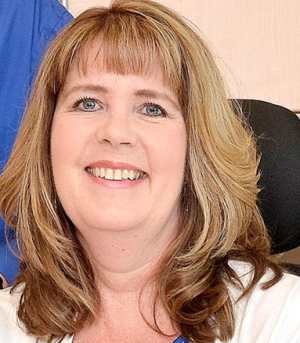 Author: Mary Zilney
Author: Mary Zilney
Mary Zilney has a Master’s degree in Social Work from Wilfrid Laurier University. For the past 8 years, she has held the position of Chief Executive Officer of Women’s Crisis Services of Waterloo Region. Mary has worked in the area of family violence for almost 20 years.
Posted on: June 28th, 2013 by Waterloo Region Crime Prevention Council
The data in the section of Root Causes of Crime in Waterloo Region titled Income of Low Income Families is no surprise to those of us who are familiar with poverty-related issues in our regional community. In fact, in Waterloo Region, 36 earners make more than $2.57M; 360 make more than $685K; 3,610 (the top 1%) make more than $396K. Individuals who make more than $81,200 are in the top 10%. On the other hand, the median income of the bottom 50% is $14,100!* In 2007, one third of employed individuals were earning $14.00/hour or less. This is poor – it may not be deep (or absolute) poverty, but it is precariously close to it.
Another point I’d like to make has to do with the title: ‘Income for Low Income Families’. I’m concerned that when we (government, media and community groups) use only the word ‘family’ or ‘children’ in our communications about poverty, we further stigmatize the ‘individual’. By leaving out the word ‘individual’ are we not practicing a type of exclusion even as we talk about and promote inclusion? Now, I know that the use of the word ‘individual’ in conjunction with poverty has greater stigma attached to it than the word ‘family’ or ‘children’ and most likely this is why many of us omit the ‘i’ word. But is this REALLY okay with you?
This brings me to the issue that is – in my opinion – the root of all root causes and needs the highest priority in order to significantly reduce and prevent poverty in the long term – this is the stigmatization of people living in poverty. Societal attitudes/values impact our political voting choices and influence policy decisions. It’s my belief that if enough of us TRULY believed that everyone was a valuable member of society, we’d have much better policies in place reflecting that belief.
Since 2007, as resources allow, Opportunities Waterloo Region has been working on an initiative to shift societal attitudes towards people living in poverty. As a result of the early work completed by partners from across Canada, a three-phase strategy was developed. The three steps are:
-
research deep-seated attitudes of Canadians towards people living in poverty,
-
research best practices, and
-
develop a comprehensive, long-term multi-faceted approach to shift these attitudes.
The research step is critical. We think we know what the attitudes are, but these might be ones that are only visible on the surface. We need to know what the deep-seated societal attitudes are and how (or if) they connect to one another, so that we can create an effective communications strategy. Lofty goal? Big job? You bet!
This project stalled because we could not find the research dollars to begin the first step. Then in 2011, as a result of Opportunities Waterloo Region’s long-term partnership with Dr. Terry Mitchell, Associate Professor, Psychology at Wilfrid Laurier University, we were able to begin a project to research deep-seated societal attitudes towards people living in poverty. Some of the data collected over the two years was analyzed, the results of which was presented at the May 28th Community Conversations Series event. You can view the presentation here. The findings were discussed and ideas for next steps considered. A fact sheet is currently being developed and will be share in our September newsletter.
If you’d like a copy of the fact sheet or further information about the research project, please let me know. Although we don’t have all the answers yet, progress has been made, various strategies to shift attitudes are being discussed, and we are having deeper conversations about these attitudes – all very important early steps.
The research will continue in 2013-2014. Stay tuned for updates as they develop by reading about this project on our website.
*Data analysis by Ernie Ginsler using Statistics Canada Data, 2010.
Author: Since 2004, Mary MacKeigan has been the Executive Director of Opportunities Waterloo Region, a non-profit organization dedicated to the prevention and reduction of poverty. She has more than 20 years of experience in the field of poverty prevention, reduction and alleviation.
 A big part of these two years was assisting the youth in opening a Youth Art Studio. This studio gave opportunities for at-risk youth to express themselves through the creative arts. It gave the youth a chance to engage in a new and healthy outlet to express their emotions, as well as cope with current and past adversities. I also assisted these youth in running their very first Art Show at a local gallery. Some sold their art, some made the paper; but more importantly I noticed a huge boost of confidence in each of the youth who took part in this.
A big part of these two years was assisting the youth in opening a Youth Art Studio. This studio gave opportunities for at-risk youth to express themselves through the creative arts. It gave the youth a chance to engage in a new and healthy outlet to express their emotions, as well as cope with current and past adversities. I also assisted these youth in running their very first Art Show at a local gallery. Some sold their art, some made the paper; but more importantly I noticed a huge boost of confidence in each of the youth who took part in this.


 Author: Paul Field
Author: Paul Field
 Author: Krista McCann
Author: Krista McCann The most important lessons and understandings learned from inREACH will inspire community action toward a future where all young people feel part of a caring community and have the opportunities and the supports they need and deserve. But, any evaluation isn’t even worth the paper it’s printed on if it just sits on a shelf. We need to apply the evaluation findings so that we can affirm what might already work but also make changes where needed.
The most important lessons and understandings learned from inREACH will inspire community action toward a future where all young people feel part of a caring community and have the opportunities and the supports they need and deserve. But, any evaluation isn’t even worth the paper it’s printed on if it just sits on a shelf. We need to apply the evaluation findings so that we can affirm what might already work but also make changes where needed. Some believe that teenagers – particularly those labelled as “trouble” – don’t want to be involved in community activities or mentoring relationships with adults. The evaluation busts that myth by demonstrating very clearly – that if organizations and communities take the right approach – then many adolescents and young adults, will participate in asset building activities like arts and sports. Many will also seek assistance for challenges they face with things like addictions, gang involvement or finding a job or a home, when they have developed a trusting relationship with an adult who meets them ‘where they’re at.’ The evaluation results also clearly demonstrated that when young people got involved in their communities and received help with life challenges, they experienced many positive benefits and changes. Over 95 % of youth agreed their involvement “helped them move in the direction in life they wanted to go.” For example, youth said:
Some believe that teenagers – particularly those labelled as “trouble” – don’t want to be involved in community activities or mentoring relationships with adults. The evaluation busts that myth by demonstrating very clearly – that if organizations and communities take the right approach – then many adolescents and young adults, will participate in asset building activities like arts and sports. Many will also seek assistance for challenges they face with things like addictions, gang involvement or finding a job or a home, when they have developed a trusting relationship with an adult who meets them ‘where they’re at.’ The evaluation results also clearly demonstrated that when young people got involved in their communities and received help with life challenges, they experienced many positive benefits and changes. Over 95 % of youth agreed their involvement “helped them move in the direction in life they wanted to go.” For example, youth said: Sharing our Story describes key elements of the inREACH approach that was so successful. It took
Sharing our Story describes key elements of the inREACH approach that was so successful. It took Continuing the Learning
Continuing the Learning
 Title:
Title: 
 Data Source: Ontario Early Years Centre, A Community Fit for Children Report (Released Every Three Years)
Data Source: Ontario Early Years Centre, A Community Fit for Children Report (Released Every Three Years) Author: Amy Romagnoli is the Data Analysis Coordinator at the YMCA
Author: Amy Romagnoli is the Data Analysis Coordinator at the YMCA  Author: Mary Zilney
Author: Mary Zilney